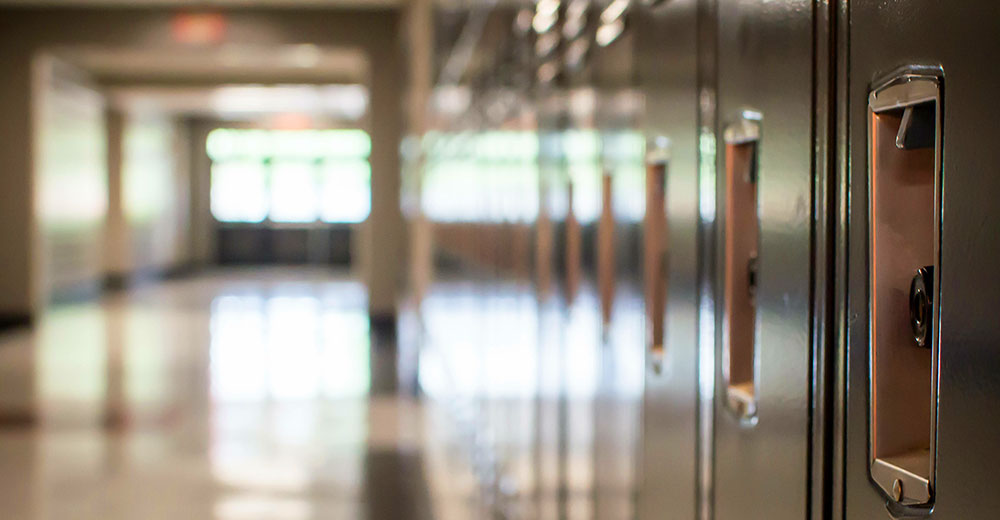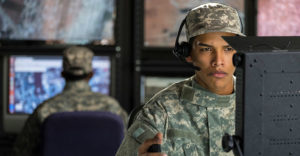Schools are spending a flood of money on security products. Still, according to a new report from Parks Associates, not enough thought is given to how the products can be leveraged to better respond to violence in schools.
The market research and consulting company in Addison, Texas, noted in its report that while schools have boosted the use of access control practices, faculty badges, and security cameras for nearly 20 years, the measures haven’t been able to protect schools adequately from violence.
Citing statistics from the School Survey on Crime and Safety, the report said that during the 2017-18 school year, 71% of schools experienced at least one violent incident, and 21% experienced a serious violent incident. The National Center for Education Statistics released similar figures for the 2019-20 school year.
“While these data points are from different organizations, the numbers show a 4% increase in serious violent incidents even though the use of surveillance cameras, access control, and other security systems on school grounds are at all-time highs,” wrote authors Parks President and CMO Elizabeth Parks and Research Intern August Ward.
“Schools are spending a lot of money on security products, but they don’t do a great job on thinking through response,” observed Mark Hatten, CEO of Mutualink, a provider of interoperability security solutions based in Wallingford, Conn.
“All those security products produce is evidence after the fact. They haven’t been coordinated and thought through for a response,” Hatten told TechNewsWorld.
Better Access Control
The report noted that evolving school security technology is providing increasingly capable assistance to first responders.
“Advanced technologies rapidly give first responders a lot of additional information about what’s going on in the environment without depending on humans to relay that information,” Parks told TechNewsWorld.
Access control systems allow people to skip the step of keeping track of doors being locked, the report explained. Access control systems enable people not to worry whether doors have been locked.
In the Uvalde tragedy, it added, a door to the school that would normally be locked was left open, allowing the gunman to enter with ease. A machine locking system might have prevented that.
The report indicated that advancements in artificial intelligence and machine learning could also accelerate response times. AI and ML can identify suspicious activity, spot dangerous items, recognize patterns, and organize data and evidence, it continued. These are powerful abilities to improve security and response times, particularly when it can occur without the aid of an operator.
However, Parks maintained that automation should not be a substitute for human intervention. “Technology and automation need to be used not to replace humans but to provide humans with better information so humans can respond better,” she said.
ZeroEyes Technology
Dot Blackwell, superintendent of the Vassar Public Schools in Vassar, Mich., though, believes school security technology is less effective in addressing violence problems when it relies on staff to monitor or manage it.
The Vassar Public Schools, located 45 minutes from Oxford High School, the scene of a mass shooting in November 2021 in which four students were killed, and seven people were injured, including a teacher, recently installed a new security system called ZeroEyes.
ZeroEyes works with existing video surveillance systems in a school to identify firearms. It can alert first responders of a potential threat in from three to five seconds — even though an image of a threat must pass human muster before it’s forwarded to the proper authorities.
“The ZeroEyes technology is the first product that our school district discovered that offered an innovative way to monitor the movements within our building and in our parking lots that could provide us with precious minutes to save lives,” Blackwell told TechNewsWorld.
Push the Panic Button
Another technology cited in the report is panic devices that enable emergencies to be reported without explanation. In some cases, technology is more efficient and effective than humans.
Mutualink can enhance the information sent to first responders from devices like panic buttons.
“When you push a panic button, in about four seconds, the school’s floor plan with the camera feeds is sent to the police,” Hatten explained.
“The fact is, if someone wants to inflict harm, they’re likely to get into a school,” he maintained.
“When the security products designed to keep intruders out of a school fail to do so, Mutualink can instantly share information from those products with the police.”
Hatton added, “Mutualink converts day-to-day security products into effective response products.”
Technologies Need To Work Together
Personal Emergency Response Systems are also cited in the report. It explained that PERS devices enable school staff to simply press a button to contact first responders when needed. According to the report, the technology can improve and simplify response times, which is one of the most significant problems with active threats on campuses.
One of the benefits of the devices cited in the report is their low cost, which is why they are being used more frequently in schools. However, a challenge with this technology and security systems, in general, is false alarms.
According to Parks’ research, about half of security owners say their security system triggers too many false alarms. Additionally, 62% of home security owners report experiencing a false alarm in the past 12 months, and nearly 10% report they experienced more than five false alarms in the past year.
The report noted that multiple technologies must work together to secure a school effectively. Every school has a different layout, population size, and funding, meaning that one set of security solutions isn’t going to work for all. Every state, it continued, has different regulations and grant systems for their schools, which in turn makes it difficult to integrate security companies nationwide.
Time will tell how these new technologies perform, the Parks report predicted. School security technology is advantageous, but currently, more metrics are needed to evaluate tech used for school safety. It noted that technology cannot guarantee flawless defense against security breaches and threats. Still, it can help reduce the chance of a dangerous situation occurring and create efficiencies in emergency response.
“How do we stop school violence is a million-dollar question,” Parks said. “I don’t know if we have the answer yet. But we can have the best response to any threat in a school to protect the children there.”

























































